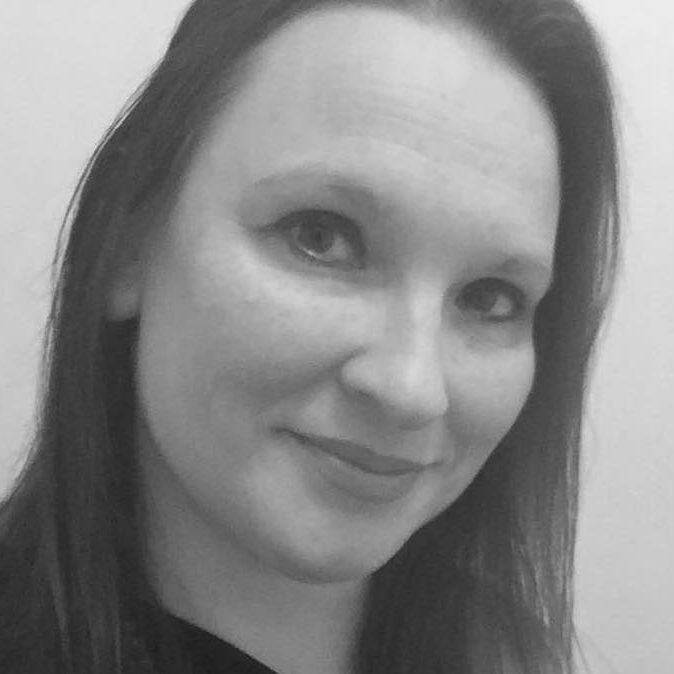 Photo from Wikimedia Commons
Photo from Wikimedia Commons After two nights in Krakow, we were returning to Warsaw to finish our study trip to Jewish Poland. I packed, pulling out clothes for Sunday’s site visit: comfortable shoes, pants instead of a dress, black clothing to convey an appropriate somberness for Auschwitz.
My deliberations seemed like unintentional mockery — disrespectful in the
light of history that we all know well. When Jews packed before “resettlement,” they had no idea where they were going, and many may have suspected that packing was just an exercise. I knew how the story ended, that later that day, I would see those suitcases and the belongings that filled them.
In conversation, a trip participant mentioned that his parents had been deported from Hungary around June 21 or 22 in 1945. Transports took about 10 days for the journey to Auschwitz, so they would have arrived on or around July 2. Our visit to Auschwitz was on July 2, 2017.
Seeing on social media where I was, one of my friends messaged me, “Look for my daughter — she is also at Auschwitz.” Although it’s an informational statement (and in 2017, 2.1 million people visited), adding “at Auschwitz” to any sentence brings a flush of nausea. This contemporary game of Jewish geography had a troubling, alternate reality echo: Had inmates been desperate to see familiar faces, or did not seeing familiar faces mean maintaining hope that some had survived?
We’re here. They never would have dreamed we would be. But we are.
I had a solid Jewish education and already understood my responsibility to never forget. I’d read Anne Frank, Elie Wiesel, Simon Wiesenthal and Yaffa Eliach. I wrote a book about the Hidden Children of the Holocaust. I’d been to Yad Vashem, the Museum of Jewish Heritage, the United States Holocaust Memorial Museum, and half a dozen other Jewish museums in various cities. I don’t remember a time when I didn’t know about Auschwitz, about the people who passed under that famous gate, the “Arbeit Macht Frei,” that sets an ache into the Jewish heart. Now that we were there, our guide explained that it was a replica; the real sign had been stolen in 2009 and cut into pieces to fit into the getaway car. The original is in storage, he said. I imagined it in a government warehouse with endless rows of identically sized boxes, while its understudy played its part.
I had been prepared to feel every aspect of sadness in this space, but as I went from room to room, looking at the artifacts — shoes, hairbrushes, suitcases, uniforms — I felt the mildest version of sadness. Where were my tears? What was wrong with me? Was I too prepared? Or was it the damned replica gate, the fact that some of this experience had been constructed for tourists, that made me disconnect?
Then I saw the hair. Cut from the heads of the victims, the hair was horror, and the human loss it represented snapped me back into humanity. From that point on, I was emotionally tuned in.
One of the men on our trip wore his tallit throughout the visit, and I understood it was his way of proclaiming triumph: We, the Jews, are still here. I needed to find my own way to do that.
I pointed my phone’s camera toward the ground and walked; filming my feet, black sneakers on gravelly earth; not speaking, listening to the mostly quiet air, the sound of my feet as they hit the ground; feeling my breath as I walked and being both grateful and horrified.
I walked in their footsteps, in their memory, in an attempt to feel, understand and experience a new kind of Jewish geography — the mobius strip of communal memory, where location binds past to the present, and we all march into our unknown future.
Connecting with others who are here. Seeing the place. Feeling the gravity of the location beneath our feet. Inhaling the trauma of our history with every breath. Trying to process their loss and the triumph of our return. We’re here. They never would have dreamed we would be. But we are. I am.
Esther D. Kustanowitz, a 10-year veteran of Twitter, is a contributing writer at the Jewish Journal and an editor at GrokNation.com.























 More news and opinions than at a Shabbat dinner, right in your inbox.
More news and opinions than at a Shabbat dinner, right in your inbox.